Monographs by Luděk Vacín
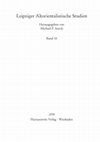
Benno Landsberger (1890–1968) was an Assyriologist whose research and teaching decisively shaped ... more Benno Landsberger (1890–1968) was an Assyriologist whose research and teaching decisively shaped the development of his field in the latter two thirds of the 20th century. The present work constitutes the first book-length study of Landsberger’s life and career. Focusing on his formative years, it is sought to answer the question of his motivation for the study of ancient Mesopotamia in the context of the cultural discourses of the day. In doing so, the work uncovers the personal background behind Landsberger’s concept of “Eigenbegrifflichkeit” of Babylonian culture, a foundational theoretical framework for further development of Assyriology as a modern scientific discipline.
Additionally, the book presents and analyzes new evidence for Landsberger’s studies and work in Leipzig, relocation to Ankara, as well as his personal life before and during his Turkish exile. The volume also addresses in detail Landsberger’s relationship and enduring interaction with his students from the golden age of the “Leipziger Schule” of Assyriology. Drawing on a wealth of often hardly accessible archival, oral, and epistolary sources, the book offers a well-founded and contextualized account of Landsberger’s life and work in his European and Turkish periods. It is a welcome contribution to the historiography of Assyriology, providing much new knowledge as well as many stimuli for further research.
Edited Books by Luděk Vacín
Mesopotamian Medicine and Magic: Studies in Honor of Markham J. Geller is a thematically focused ... more Mesopotamian Medicine and Magic: Studies in Honor of Markham J. Geller is a thematically focused collection of 34 brand-new essays bringing to light a representative selection of the rich and varied scientific and technical knowledge produced chiefly by the cuneiform cultures. The contributions concentrate mainly on Mesopotamian scholarly descriptions and practices of diagnosing and healing diverse physical ailments and mental distress. The Festschrift contains both critical editions of new texts as well as analytical studies dealing with various issues of Mesopotamian medical and magical lore. Currently, this is the largest edited volume devoted to this topic, significantly contributing to the History of Ancient Sciences.
Book Chapters by Luděk Vacín
České klínopisné bádání, předovýchodní archeologie a spřízněné obory v dokumentech ŠÁRKA VELHARTI... more České klínopisné bádání, předovýchodní archeologie a spřízněné obory v dokumentech ŠÁRKA VELHARTICKÁ (ed.
České klínopisné bádání, předovýchodní archeologie a spřízněné obory v dokumentech ŠÁRKA VELHARTI... more České klínopisné bádání, předovýchodní archeologie a spřízněné obory v dokumentech ŠÁRKA VELHARTICKÁ (ed.
České klínopisné bádání, předovýchodní archeologie a spřízněné obory v dokumentech ŠÁRKA VELHARTI... more České klínopisné bádání, předovýchodní archeologie a spřízněné obory v dokumentech ŠÁRKA VELHARTICKÁ (ed.
Mesopotamian Medicine and Magic: Studies in Honor of Markham J. Geller, ed. S.V. Panayotov and L. Vacín, Leiden: Brill, 698-744, 2018
Photos and copies in better quality than in the original offprint.
https://brill.com/abstract/title/24864?rskey=xxVVSP&result=1
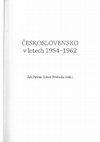
From a "Pilgrimage Site" to an Establishment Which "Does Not Correspond to Our People's Feelings"... more From a "Pilgrimage Site" to an Establishment Which "Does Not Correspond to Our People's Feelings": Changes of the CPC Attitude towards K. Gottwald's Mausoleum in the Years of De-Stalinization
The period of hesitant de-Stalinization of politics and society in Czechoslovakia may be studied from many angles. I have decided to take a look at the most important piece of Stalinist political symbolism in the country, the history of which truly reflects the winding path Czechoslovakia took out of the Stalinist era. The paper gives an outline of political rituals which took place at the Mausoleum, their frequency, transformations and decline in the years 1954-1962. Furthermore, the work focuses on the media coverage of the Mausoleum in the studied period, which illustrates a gradual abandonment of Stalinist rhetoric by the Party leadership. Finally, it looks into the intra-Party discussion concerning the decision to shut down Gottwald's Mausoleum, focusing on the frequently disapproving reactions of base Party organizations which the decision instigated at the very end of the studied period.
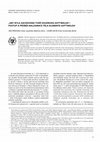
This study aims to establish the history and nature of the preservation work done by Soviet and C... more This study aims to establish the history and nature of the preservation work done by Soviet and Czechoslovak physicians on the corpse of Communist leader Klement Gottwald from the day of autopsy on 15 March 1953 to the cremation of the body on 12 June 1962.
It draws on a wealth of hitherto unpublished or overlooked primary sources from Czech archives which allow that the topic of embalming a Communist leader’s body for display in a mausoleum be scrutinized for the first time in a scholarly, methodologically sound fashion as well as minute detail.
This paper thoroughly describes and explains the methods applied to Gottwald’s body while presenting a chronologically arranged narrative of major events in everyday control and care for the body until its incineration, connected with the second wave of de-Stalinization in Czechoslovakia.
The study thereby makes a significant contribution to the research on the (posthumous) cult of leaders in Stalinist regimes, particularly on the science and technology involved in the physical deification of the leader as the “eternal” symbol of the regime’s enduring legitimacy and stability. In so doing, the article also disproves the popular rumours about the alleged decomposition of Gottwald’s body.
This paper deals with the handover of Klement Gottwald’s preserved cadaver from Soviet to Czechos... more This paper deals with the handover of Klement Gottwald’s preserved cadaver from Soviet to Czechoslovak hands in February 1955. It shows how the issue of long-term care for the corpse was handled by several departments of the Party and state administration during 1954 and early 1955, offers brief CVs of the Czechoslovak physicians in charge of the body’s conservation, and provides an edition of two key documents related to the assignment of Gottwald’s body to them.
It thereby contributes to the study of the early history of Communist mausolea and helps dispel popular rumours about the allegedly improper embalming and subsequent decay of Gottwald’s body.
The paper addresses the organization and staffing of a division which was created in December 195... more The paper addresses the organization and staffing of a division which was created in December 1953 within the Czechoslovak Ministry of the Interior for a special purpose. It was the task of this unit to ensure security of Gottwald’s embalmed body both in terms of technical measures necessary for the preservation of the corpse in intact state, and in terms of rigorous guarding the “object” in the mausoleum as if the president were still alive.
Following an introduction which describes the activity of the unit, its origins, structure, changes in staffing up to late 1956, as well as social and professional background of the staff in general, the article offers short CVs of 21 key members of the mausoleum personnel. These clearly show that popular rumours about the mausoleum workers, circulating in the country during the past sixty years, are entirely false.

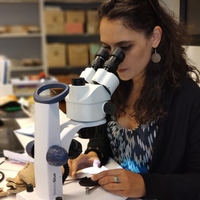
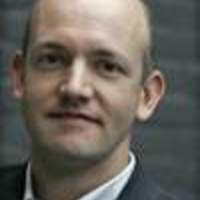
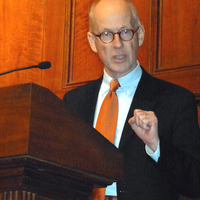
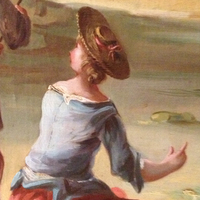

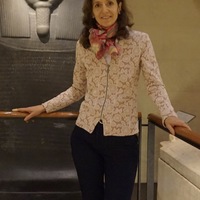
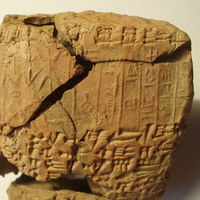
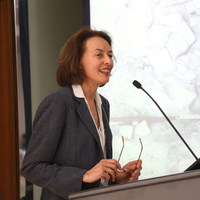
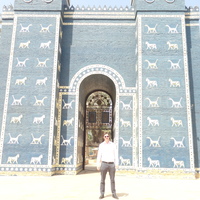
Uploads
Monographs by Luděk Vacín
Additionally, the book presents and analyzes new evidence for Landsberger’s studies and work in Leipzig, relocation to Ankara, as well as his personal life before and during his Turkish exile. The volume also addresses in detail Landsberger’s relationship and enduring interaction with his students from the golden age of the “Leipziger Schule” of Assyriology. Drawing on a wealth of often hardly accessible archival, oral, and epistolary sources, the book offers a well-founded and contextualized account of Landsberger’s life and work in his European and Turkish periods. It is a welcome contribution to the historiography of Assyriology, providing much new knowledge as well as many stimuli for further research.
Edited Books by Luděk Vacín
Book Chapters by Luděk Vacín
The period of hesitant de-Stalinization of politics and society in Czechoslovakia may be studied from many angles. I have decided to take a look at the most important piece of Stalinist political symbolism in the country, the history of which truly reflects the winding path Czechoslovakia took out of the Stalinist era. The paper gives an outline of political rituals which took place at the Mausoleum, their frequency, transformations and decline in the years 1954-1962. Furthermore, the work focuses on the media coverage of the Mausoleum in the studied period, which illustrates a gradual abandonment of Stalinist rhetoric by the Party leadership. Finally, it looks into the intra-Party discussion concerning the decision to shut down Gottwald's Mausoleum, focusing on the frequently disapproving reactions of base Party organizations which the decision instigated at the very end of the studied period.
It draws on a wealth of hitherto unpublished or overlooked primary sources from Czech archives which allow that the topic of embalming a Communist leader’s body for display in a mausoleum be scrutinized for the first time in a scholarly, methodologically sound fashion as well as minute detail.
This paper thoroughly describes and explains the methods applied to Gottwald’s body while presenting a chronologically arranged narrative of major events in everyday control and care for the body until its incineration, connected with the second wave of de-Stalinization in Czechoslovakia.
The study thereby makes a significant contribution to the research on the (posthumous) cult of leaders in Stalinist regimes, particularly on the science and technology involved in the physical deification of the leader as the “eternal” symbol of the regime’s enduring legitimacy and stability. In so doing, the article also disproves the popular rumours about the alleged decomposition of Gottwald’s body.
It thereby contributes to the study of the early history of Communist mausolea and helps dispel popular rumours about the allegedly improper embalming and subsequent decay of Gottwald’s body.
Following an introduction which describes the activity of the unit, its origins, structure, changes in staffing up to late 1956, as well as social and professional background of the staff in general, the article offers short CVs of 21 key members of the mausoleum personnel. These clearly show that popular rumours about the mausoleum workers, circulating in the country during the past sixty years, are entirely false.
Additionally, the book presents and analyzes new evidence for Landsberger’s studies and work in Leipzig, relocation to Ankara, as well as his personal life before and during his Turkish exile. The volume also addresses in detail Landsberger’s relationship and enduring interaction with his students from the golden age of the “Leipziger Schule” of Assyriology. Drawing on a wealth of often hardly accessible archival, oral, and epistolary sources, the book offers a well-founded and contextualized account of Landsberger’s life and work in his European and Turkish periods. It is a welcome contribution to the historiography of Assyriology, providing much new knowledge as well as many stimuli for further research.
The period of hesitant de-Stalinization of politics and society in Czechoslovakia may be studied from many angles. I have decided to take a look at the most important piece of Stalinist political symbolism in the country, the history of which truly reflects the winding path Czechoslovakia took out of the Stalinist era. The paper gives an outline of political rituals which took place at the Mausoleum, their frequency, transformations and decline in the years 1954-1962. Furthermore, the work focuses on the media coverage of the Mausoleum in the studied period, which illustrates a gradual abandonment of Stalinist rhetoric by the Party leadership. Finally, it looks into the intra-Party discussion concerning the decision to shut down Gottwald's Mausoleum, focusing on the frequently disapproving reactions of base Party organizations which the decision instigated at the very end of the studied period.
It draws on a wealth of hitherto unpublished or overlooked primary sources from Czech archives which allow that the topic of embalming a Communist leader’s body for display in a mausoleum be scrutinized for the first time in a scholarly, methodologically sound fashion as well as minute detail.
This paper thoroughly describes and explains the methods applied to Gottwald’s body while presenting a chronologically arranged narrative of major events in everyday control and care for the body until its incineration, connected with the second wave of de-Stalinization in Czechoslovakia.
The study thereby makes a significant contribution to the research on the (posthumous) cult of leaders in Stalinist regimes, particularly on the science and technology involved in the physical deification of the leader as the “eternal” symbol of the regime’s enduring legitimacy and stability. In so doing, the article also disproves the popular rumours about the alleged decomposition of Gottwald’s body.
It thereby contributes to the study of the early history of Communist mausolea and helps dispel popular rumours about the allegedly improper embalming and subsequent decay of Gottwald’s body.
Following an introduction which describes the activity of the unit, its origins, structure, changes in staffing up to late 1956, as well as social and professional background of the staff in general, the article offers short CVs of 21 key members of the mausoleum personnel. These clearly show that popular rumours about the mausoleum workers, circulating in the country during the past sixty years, are entirely false.
Some of the devices had to be devised and produced as prototypes, for Czechoslovak industry did not have any experience with the machinery and appliances used to keep a leader’s body in perfect state of preservation.
Since the construction and supplies of all the special equipment was the responsibility of the Ministry of National Defence, piles of documents complying with the custom of the military to record each and every detail are preserved in Czech archives along with meticulous architectonic and technical designs. These hitherto untapped sources permit that the key phases of the construction, tests, early operation and particularly the crucial technical facilities of the Prague mausoleum be described with precision for the first time. All specifications of the main appliances are included in this study so that their function in the upkeep of the leader’s remains be better understood.
The rituals included the compilation and shipment of the required condolences to the ruling group, as well as the resolutions and commitments from various organizations, which is dealt with in the following section. These official, written responses to the leader's death are among the best examples of the frozen mode of public communication between the Stalinist regime and the people through formal, pseudo-religious rhetoric. They served to strengthen the legitimacy of the regime in a critical moment of the loss of the leader, and to maintain the illusion of the unity of all groups of citizens seemingly willing to take part in building the new order.
The private sentiments of Czechoslovaks, expressed outside the public sphere, were under close scrutiny of the security authorities. Their reports on the public opinion about Gottwald's death for Party authorities at the local as well as national level are utilized in the next part of the contribution. Three themes stick out in the surviving reports. People eagerly discussed those and the security forces devoted considerable attention to them. They concerned speculation about the cause of Gottwald's death and future political arrangements, the invective and symbolic acts of resistance against the regime, and finally the hope for a change of political system in the country, as demonstrated by minor incidents, leaflet operations, or even attempts at a larger resistance activity.
A comparison of the public and private comments on the death of K. Gottwald shows that the Communist regime, despite all the efforts of the initial five years of its dictatorship in Czechoslovakia, did not have the thinking of the population under 'total' control, and that despite official declarations the support of even those who favored the regime by virtue of their social origin and political beliefs was still very uncertain. ""
It addresses the myth according to which the body was gradually decomposing due to an improperly performed embalming, which should have been one of the reasons for the eventual closure of the mausoleum. This story, enriched over the years with many flamboyant details, is currently taken as a fact by the Czech media, the Wikipedia (Czech, Slovak, Polish, German, Spanish version of the entry “Klement Gottwald”) and even by some scholars.
It is shown that the original rumour originated within days after Gottwald’s death and reflected the resentment of the Czechoslovaks towards the “Oriental” tradition of embalming communist leaders but that it did not have anything to do with the reality of maintaining Gottwald’s body. The myth is disproved using hitherto overlooked archival sources as well as written and oral testimonies of people who were in charge of the body’s preservation.
The paper also introduces the mausoleum’s non-medical staff, discusses their tasks, and shows how some unusual events were dealt with, according to both the archival documents and memories of eyewitnesses. In conclusion, the context and circumstances of the closure of the mausoleum are discussed. As usual, fact is eventually more interesting than myth.
Image courtesy The Netherlands Institute for the Near East (NINO, F. R. Kraus Archive)
Furthermore, there are four unpublished OB tablets. One gives the Sumerian text on the obverse and the Akkadian translation on the reverse. It contains a text reminiscent of CBS 11341 and may, in fact, represent a different section or even version of the same composition. The next is an excerpt from a line-by-line translation of a text duplicating a section of CBS 11341. The third one is another section of the composition known from CBS 11341, this time in Sumerian with occasional Akkadian glosses. The last one contains no less than 108 bilingual lines from the hymn Šulgi B. In this tablet, the Sumerian lines are followed by Akkadian translations whose script is of equal size and which are separated from the Sumerian text by rulings.
Focusing on the unpublished manuscripts, the talk will deal with, e.g., the text arrangement and selected grammatical and lexical issues in those texts. In addition to presenting some of the most interesting passages, the talk will address the question of the transmission of the Šulgi hymns, in particular the possible setting and function of the bilingual copies, based on the evidence provided by the new manuscripts.
The paper explores intertextual relations of such debates with poems in praise of the respective Ur III kings to put forward a hypothesis that literary disputes were part of Ur III royal propaganda and court ceremonial aiming to promote particularly Šulgi’s ideology of the divine king, portrayed in the debates as a judge of the values and qualities of animals and plants and the decision maker whose judgements were essential for the organization and management of the Sumero-Akkadian universe.
While the destroyed and defunct mausolea continue to be a subject of rumours and fables widely circulating among citizens of the respective countries, and globally among journalists and some scholars, very little is currently known about what actually transpired in a communist mausoleum.
This talk will offer first an overview of the cultural background and ideological reasons for the origin of communist mausolea in general. Second, it will demonstrate the details of the Soviet embalming method and the symbolic meaning of displaying the leader’s body, based on archival documents relating to the mausoleum of Bulgarian leader Georgi Dimitrov (on display 1949–1990) and Czechoslovak president Klement Gottwald (on display 1953–1962). The recently declassified archives of these mausolea currently represent the only freely accessible documentation of its kind. The formerly top secret material to be presented in this talk was never seen before by anybody else than the embalmers.
The talk will conclude with a discussion of the relationship of the embalmers to the practice of preserving dead bodies in the past. It will be shown that the Soviet, and to a lesser extent also the Bulgarian, specialists were fully aware that their preservation work in a monumental tomb constituted a continuation of a tradition inherited from antiquity, and they did not hesitate to publicly acknowledge that, at the same time highlighting the fundamental differences between the context and method of ancient and modern body preservation. They were (and still are) proud of their work while the attitude of particularly the Soviet population to the mausoleum project certainly was not negative. The attitude of the Czech specialists, however, was marked by indifference or even shame while the mausoleum project met with condemnation among the majority of Czechoslovaks."
In each of the historical phases and social contexts of Mesopotamian mathematics may be detected curiosity, wit, systematic attitude to mathematical problems and considerable creativity. In order to understand the extremely rich corpus of Mesopotamian maths properly, it should be studied within its cultural background. This background was complex, self-contained and advanced, and its mathematical legacy must not be taken out of this context. This talk offered an overview of social history of Mesopotamian mathematics. In other words, it discussed when, under which conditions it was practiced, who were the practitioners, and why they considered it important to create and develop mathematical knowledge at all.